| Date | Text | |
|---|---|---|
30 Nov 1940

George Wells Beadle |
George Wells Beadle (biology) George Wells Beadle and Edward Lawrie Tatum publish "Genetic Control of Biochemical Reactions in Neurospora" which shows that specific genes code for specific proteins. |
|
30 Nov 1940

John William Field |
John William Field (biology) John William Field develops Field stain to detect malarial parasites. |
|
30 Nov 1940

John Vincent Atanasoff |
John Vincent Atanasoff (computer science) John Vincent Atanasoff and Clifford E. Berry develop the Atanasoff–Berry Computer. |
|
30 Nov 1940

Charles Singer |
Charles Singer (history of science) Charles Singer's A Short History of Science to the Nineteenth Century published in the U.K. |
|
30 Nov 1940
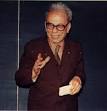
Cahit Arf |
Cahit Arf (mathematics) Cahit Arf defines the Arf invariant of a nonsingular quadratic form over a field of characteristic 2. |
|
30 Nov 1940

New York |
New York (medicine) The Pharmacological Basis of Therapeutics is first published in New York by Alfred Gilman and Louis S. Goodman, pharmacologists at the Yale School of Medicine. |
|
30 Nov 1940

Karl Hugo Strunz |
Karl Hugo Strunz (mineralogy) German mineralogist Karl Hugo Strunz's Mineralogische Tabellen introduces Nickel–Strunz classification of minerals. |
|
30 Nov 1940

Vivian Pinn |
birth Vivian Pinn Vivian Pinn, American physician. |
|
30 Nov 1940

Dan Shechtman |
birth Dan Shechtman Dan Shechtman, Israeli winner of the Nobel Prize in Chemistry (2011). |
|
16 Jan 1941

András Sárközy |
birth András Sárközy András Sárközy, Hungarian mathematician. |
|
12 Feb 1941
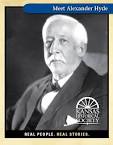
Albert Alexander |
Albert Alexander (medicine) Reserve Constable Albert Alexander, a patient at the Radcliffe Infirmary in Oxford, becomes the first person treated with penicillin intravenously, by Howard Florey’s team. He reacts positively but there is insufficient supply of the drug to reverse his terminal infection. A successful treatment is achieved during May. |
|
20 Feb 1941
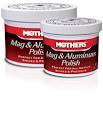
Polish |
Polish Polish microbiologist Ludwik Hirszfeld, his wife, Hanka, and daughter are forced to move into the Warsaw ghetto; here for two years he organizes anti-epidemic measures and vaccination campaigns against typhus and typhoid, as well as conducting secret medical courses. |
|
21 Feb 1941
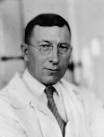
Frederick Banting |
death Frederick Banting Sir Frederick Banting (born 1891), Canadian discoverer of insulin, winner of the Nobel Prize in Physiology or Medicine (1923) (military aircraft accident) |
|
23 Feb 1941
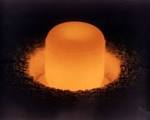
plutonium |
plutonium (chemistry) Chemical element 94, plutonium, is first synthesized by Glenn T. Seaborg, Arthur C. Wahl, Joseph W. Kennedy and Emilio Segrè. It is kept secret until after the atomic bombings of Hiroshima and Nagasaki, as it is being developed for the first atomic bombs. |
|
26 Mar 1941
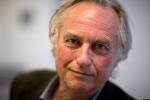
Richard Dawkins |
birth Richard Dawkins Richard Dawkins, British evolutionary biologist. |
|
27 Mar 1941

Simon Campbell |
birth Simon Campbell Simon Campbell, British chemist. |
|
13 Apr 1941
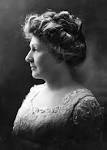
nbsp; Annie Jump Cannon |
death nbsp; Annie Jump Cannon Died 13 Apr 1941 at age 77 (born 11 Dec 1863). American, deaf astronomer who specialized in the classification of stellar spectra. In 1896 she was hired at the Harvard College Observatory, remaining there for her entire career. The Harvard spectral classification system had been first developed by Edward C. Pickering, Director of the Observatory, around the turn of the century using objective prism spectra taken on improved photographic plates. In conjunction with Pickering Cannon was to further develop, refine, and implement the Harvard system. She reorganized the classification of stars in terms of surface temperature in spectral classes O, B, A, F, G, K, M, and catalogued over 225,000 stars for the monumental Henry Draper Catalogue of stellar spectra, (1918-24). |
|
12 May 1941

Konrad Zuse |
Konrad Zuse (computer science) German engineer Konrad Zuse presents the Z3, the world's first working programmable, Turing complete, fully automatic computer, to an audience of aviation engineers in Berlin. |
|
15 May 1941

First British jet |
First British jet In 1941, Britain's first jet-propelled aircraft, the Gloster-Whittle E.28/39, flew for the first time, taking off from RAF Cranwell on a historic 17 minute flight. Its jet engines were designed by Frank Whittle, “the father of the jet engine.” The planes of the 1920s were powered by piston engines, with propellers providing the necessary thrust. This was limiting with regards to speed and height. While he was at Cranwell, still only 21 years old, Whittle began to consider the possibilities of jet propulsion as applied to aircraft. By 1930 he had designed and patented a jet aircraft engine. After 11 years, Whittle's engine, tested and modified, successfully powered an aircraft in flight. |
|
15 May 1941
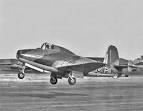
Gloster E.28/39 |
Gloster E.28/39 (technology) First flight of the Gloster E.28/39, the first British jet aircraft. |
|
25 May 1941

Uta Frith |
birth Uta Frith Uta Frith, German-born British developmental psychologist. |
|
01 Jun 1941

British |
British (physics) British scientist G. I. Taylor predicts the blast effects from an atomic bomb. |
|
06 Jun 1941
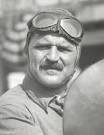
Louis Chevrolet |
death Louis Chevrolet Louis Chevrolet (born 1878), Swiss-born race driver and automobile builder in the United States. |
|
28 Jun 1941
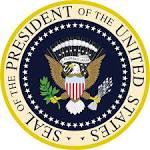
President of the United States |
President of the United States (physics) President of the United States Franklin D. Roosevelt signs Executive Order 8807 creating the Office of Scientific Research and Development with Vannevar Bush as its director. The office is charged with production of an atomic bomb. |
|
04 Jul 1941

Frederick Lindemann |
Frederick Lindemann (awards) Frederick Lindemann is raised to the British peerage as Baron Cherwell. |
|
11 Jul 1941
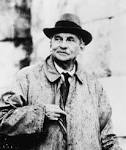
Arthur Evans |
death Arthur Evans Sir Arthur Evans (born 1851), English archaeologist. |
|
15 Jul 1941

Freeze dried penicillin |
Freeze dried penicillin In 1941, development work began on the mold cultures Howard Florey and Norman Heatley had brought with them from England to the Northern Regional Research Lab of the U.S. Dept of Agriculture in Peoria, Illinois. They wanted to produce sufficient quantities for treatment of the many wartime military casualties. The potency of the sample provided was preserved by a freeze-drying process devised by Ernst Chain. Heatley remained to get the mold culture started, while Florey left on 17 Jul to enlist drug companies. In the original process, mold was grown only on the surface of the medium in shallow pans. Instead, deep culture fermentation (similar to beer brewing) would be developed using tanks of corn steep liquor to provide a large volume for submerged growth. This greatly multiplied the yield. |
|
26 Jul 1941

Henri Lebesgue |
death Henri Lebesgue Henri Lebesgue (born 1875), French mathematician. |
|
02 Aug 1941
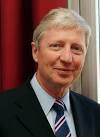
Jules A. Hoffmann |
birth Jules A. Hoffmann Jules A. Hoffmann, Luxembourg-born winner of the Nobel Prize in Physiology or Medicine (2011). |
|
22 Aug 1941
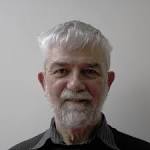
Peter Murray-Rust |
birth Peter Murray-Rust Peter Murray-Rust, British chemist and Herman Skolnik Award winner. |
|
09 Sep 1941
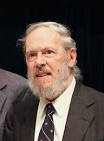
Dennis Ritchie |
birth Dennis Ritchie Dennis Ritchie (died 2011), American computer scientist. |
|
10 Sep 1941

Stephen Jay Gould |
birth Stephen Jay Gould Stephen Jay Gould (died 2002), American paleontologist/evolutionist. |
|
03 Oct 1941
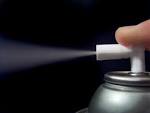
Aerosol |
Aerosol In 1941, a patent for the first aerosol can used in a commercial application was filed by chemist Lyle D. Goodhue and entomologist William N. Sullivan, researchers at the U.S. Dept. of Agriculture. It was titled a “Dispensing Apparatus” (U.S. No. 2,331,117, issued 5 Oct 1943). To apply oil-free insecticides in mushroom houses, they dissolved an insecticide in a nonflammable, liquefied gas under pressure in a strong steel container. The insecticide was allowed to escape in a fine spray through an oil burner nozzle. During WW II similar cans, dubbed “bug bombs,” were used to protect troops from malaria-carrying mosquitoes. Under the public service patent, royalty-free licenses were issued for the manufacture of insecticidal aerosols until the patent expired in 1960. Many improvements followed. |
|
01 Nov 1941
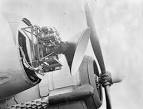
AI Mk. VIII radar |
AI Mk. VIII radar (technology) Prototype AI Mk. VIII radar, the first operational microwave-frequency Airborne Interception radar, introduced by the British Royal Air Force. |
|
18 Nov 1941
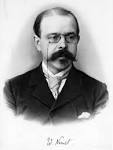
Walther Nernst |
death Walther Nernst Walther Nernst (born 1864), German physical chemist. |
|
29 Dec 1941

Tullio Levi-Civita |
death Tullio Levi-Civita Died 29 Dec 1941 at age 68 (born 29 Mar 1873). Italian mathematician who was one of the founders of absolute differential calculus (tensor analysis) which had applications to the theory of relativity. In 1887, he published a famous paper in which he developed the calculus of tensors. In 1900 he published, jointly with Ricci, the theory of tensors Méthodes de calcul differential absolu et leures applications in a form which was used by Einstein 15 years later. Weyl also used Levi-Civita's ideas to produce a unified theory of gravitation and electromagnetism. In addition to the important contributions his work made in the theory of relativity, Levi-Civita produced a series of papers treating elegantly the problem of a static gravitational field. |